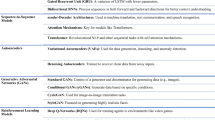Abstract
A new method for weed detection based on modelling agronomic images taken from a virtual camera placed in a virtual field is proposed. The aim was to measure and compare the effectiveness of the developed algorithms. Two sets of images with and without perspective effects were simulated. For images with no perspective, based on Gabor filtering and on the Hough transform, the performance of two crop/inter-row weed discrimination algorithms were tested and compared. The method based on the Hough transform is, in any case, better than the one based on Gabor filtering. For images with perspective effects only, an algorithm based on the Hough transform was tested and an extension to real images is discussed. These tests were done by a comparison between the weed infestation rate detected by these algorithms and the true one. This evaluation was completed with a crop/weed pixel classification and it demonstrated that the algorithm based on a Hough transform gave the best results (up to 90%).











Similar content being viewed by others
References
Andreasen, C., Rudemo, M., & Sevestre, S. (1997). Assessment of weed density at an early stage by use of image processing. Weed Research, 37, 5–18. doi:10.1111/j.1365-3180.1997.tb01817.x.
Åstrand, B., & Baerveldt, A. J. (2002). An agricultural mobile robot with vision-based perception for mechanical weed control. Autonomous Robots, 13, 21–23. doi:10.1023/A:1015674004201.
Bossu, J., Gée, C., Guillemin, J. P., & Truchetet, F. (2006). Development of methods based on double Hough transform and Gabor filtering to discriminate crop and weeds in agronomic images. In Proceedings SPIE 18th Annual Symposium on Electronic Imaging Science and technology—“Machine Vision Applications in Industrial inspection XIV”, Vol. 6070.
Brown, R. B., & Steckler, J. P. G. A. (1995). Prescription maps for spatially variable herbicide applications in no-till corn. Transactions of the ASAE, 38(6), 1659–1666.
Cardina, J., Johnson, G., & Sparrow, D. (1997). The nature and consequence of weed spatial distribution. Weed Science, 43, 364–373.
Duda, R. O., & Hart, P. E. (1972). Use of the Hough transformation to detect lines and curves in pictures. Communications of the Association for Computing Machinery, 15(1), 11–15.
Faugeras, O. (1993). Three dimensional computer vision: A geometric viewpoint. Cambridge, MA, USA: MIT Press.
Felton, W. L. (1995). Commercial progress in spot spraying weeds. In Proceedings of Brighton Crop Protection Conference—Weed (Vol. 3, pp. 1087–1096). British Crop Protection Council.
Felton, W. L., & McCloy, K. R. (1992). Spot spraying. Agricultural Engineering, 11, 26–29.
Fisher, R. A., & Miles, R. E. (1973). The role of spatial pattern in the competition between crop plants and weeds. A theoretical analysis. Mathematical Biosciences, 18, 335–350. doi:10.1016/0025-5564(73)90009-6.
Gabor, D. (1946). Theory of communication. Journal of IEE (London), 93(III), 429–457.
Goreaud, F. (2000). Apports de l’analyse de la structure spatiale en forêt tempérée à l’étude et la modélisation des peuplements complexes. [Contribution of the spatial structure analysis in temperate forest to the study and the modelling of complex population]. Thesis Cémagref—University of Clermont-Ferrand, France, p. 525.
Hapke, B. (1981). Bidirectional reflectance spectroscopy. Journal of Geophysical Research, 86, 3039–3054. doi:10.1029/JB086iB04p03039.
Hough, P. V. C. (1962). A method and means for recognizing complex patterns. U.S. Patent Office No. 3069654.
Jacquemoud, S., & Baret, F. (1990). PROSPECT: A model of leaf optical properties spectra. Remote Sensing of Environment, 34(2), 75–92. doi:10.1016/0034-4257(90)90100-Z.
Jones, G., Gée, C., & Truchetet, F. (2007a). Crop/weed discrimination in simulated images. In Proceedings of IS&T/SPIE 18th Annual Symposium on Electronic Imaging Science and Technology–“Image Processing: Algorithms and Systems VI”, Vol. 6497. doi:http://dx.doi.org/10.1117/12.704012.
Jones, G., Gée, C., & Truchetet, F. (2007b). Simulation of perspective agronomic images for weed detection. In J. V. Stafford (Ed.), Proceedings of the 6th European Conference on Precision Agriculture (pp. 507–514). The Netherland: Wageningen Academic Publishers.
Miles, R. E. (1970). On the homogeneous planar distribution Poisson point process. Mathematical Biosciences, 6, 85–127. doi:10.1016/0025-5564(70)90061-1.
Onyango, C., & Marchant, J. (2005). Image processing performance assessment using crop weed competition models. Precision Agriculture, 6, 182–192. doi:10.1007/s11119-005-1034-3.
Ripley, B. D. (1983). Computer generation of random variables: A tutorial. International Statistical Review, 51, 301–319. doi:10.2307/1402590.
Tang, L., Tian, L. F., Steward, B. L., & Reid, J. F. (1999). Texture based weed detection using Gabor wavelets and neural network for real-time selective herbicide applications. Paper No 99-3036. ASAE: St Joseph, MI, USA.
Tian, L., Reid, J. F., & Hummel, J. W. (1999). Development of a precision sprayer for site-specific weed management. Transactions of the ASAE, 42(4), 893–900.
Tillet, N. D., Hague, T., & Marchant, J. A. (1998). A robotic system for plant scale husbandry. Journal of Agricultural Engineering Research, 69(2), 169–178. doi:10.1006/jaer.1997.0245.
Van Groenendael, J. M. (1988). Patchy distribution of weeds and some implication for modelling population dynamics: A short literature review. Weed Research, 28(6), 437–441. doi:10.1111/j.1365-3180.1988.tb00825.x.
Vioix, J. B., Douzals, J. P., & Truchetet, F. (2004). Development of a multispectral imagery device devoted to weed detection. Journal of Electronic Imaging, 13(3), 547–552.
Vioix, J.-B., Douzals, J.-P., Truchetet, F., Assemat, L., & Guillemin, J. P. (2002). Spatial and spectral methods for weed detection and localisation. Eurasip Journal on Applied Signal Processing, Special Issue on Applied Visual Inspection, 7, 679–685.
Acknowledgements
The authors are grateful for the financial support provided by Tecnoma (trademark of the EXEL Industries group: http://www.tecnoma.com) and the Regional Council of Burgundy.
Author information
Authors and Affiliations
Corresponding author
Rights and permissions
About this article
Cite this article
Jones, G., Gée, C. & Truchetet, F. Modelling agronomic images for weed detection and comparison of crop/weed discrimination algorithm performance. Precision Agric 10, 1–15 (2009). https://doi.org/10.1007/s11119-008-9086-9
Published:
Issue Date:
DOI: https://doi.org/10.1007/s11119-008-9086-9




